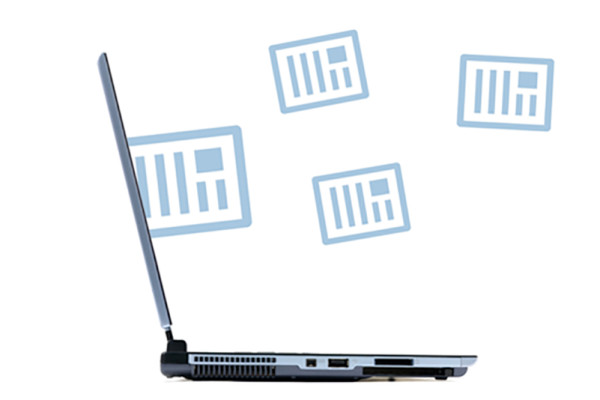What makes a good logo?
When we’re talking about good logo design versus bad logo design, it’s helpful to know what we’re talking about exactly.
If you ask 10 different designers what qualifies as a good logo, you’ll likely get 10 different answers. But if you keep digging, eventually you’ll start hearing a lot of the same thing being said.
Basically I’ve taken what I’ve heard other professional designers say, and mixed it with some of my own for a general overview of what goes into making a good logo.
To be fair, I’m not talking about difference of opinion. I’ve seen plenty of logos I didn’t particularly care for, but were actually good.
I’m talking about rules that must, for the majority of the time, be followed if a logo (and the supporting company) is to be successful.
Rules such as:
1. Keep is Simple, Silly (KISS)
Actually the phrase is normally “keep it simple, stupid,” but I was trying to be nice.
That’s right, my all time favorite element of good design—simplicity.
A good logo is simple. Click To Tweet
A good logo is simple, that is, it doesn’t have any extravagant or unnecessary elements to it.
The reason for this is twofold: one, so it can be scaled down and not lose any important details, and two, because whoever is viewing it will make a snap judgment in a matter of seconds.
If your logo is cluttered or busy, they probably won’t even bother. And you don’t want that when it comes to your logo.
2. Make it unique
There should be only one thing that stands out and is unique about your logo, something that stays in the viewer’s mind long after they’ve walked away. If it’s two or three things, then your audience probably won’t remember any of it. Remember the saying “If everything’s important, then nothing is.”
Uniqueness also falls under this category: if your logo looks like everybody else’s logo, it kind of defeats the purpose of having a logo.
Remember, the purpose of a logo is to brand yourself visually so that others can easily pick you out among others. Think of cow branding: what good is it if your cow has the exact same mark on it as Joe Shmoe’s cows do?
If your logo looks like everybody else, it defeats the purpose of having a logo. Click To Tweet
3. Be versatile
This simply means that your logo should work on a variety of platforms: print, web, small, big, one color, black and white, etc.
If the strength of your logo rests firmly on the fact that it’s got 10 colors, that’s going to be bad once you find out you can only afford 2 in your newsletter. Or that the one defining feature is a gradient that won’t work when stitched on a t-shirt. Or that the design is so complicated that once you scale down to an inch your logo becomes a blob. You get the picture.
4. Be vector-based
Translation: Photoshop and logos don’t play well together.
Many amateur designers or Do-It-Yourself-ers think that since they know Photoshop or Microsoft Paint, they can simply whip up a nice little logo. Think again.
Real world logos are made in vector-based programs, like Adobe Illustrator or Corel Draw, which means they are designed using mathematical algorithms.
This is just fancy talk for when is all said and done, your logo can easily be scaled up or down without any loss of quality.
Have you ever tried to blow up a teeny picture you found on the internet, but then it got all pixelated? That’s what happens when you try to mix Photoshop and logos. Only on very rare occasions is it OK to use Photoshop to make a logo, and even that is questionable. Rule of thumb is, don’t do it.
A secondary reason for creating logos as vectors is that it makes it much easier to manipulate. Need your logo in white? No problem. Need the symbol a tad bigger? Done. You’ll save yourself many headaches if your logo is designed the right way the first time, and that’s as a vector.
5. Stay appropriate
Not only does this mean keeping your shirt on, it also means that whatever logo you have designed, make sure it’s appropriate for your industry.
This should be self-explanatory, but I think you’ll get the idea: lawyer offices are stuck with serious logos, party stores get fun ones. Likewise, children’s boutiques can be colorful and happy, and a 5-star restaurant should be formal and reserved.
It’s kind of not fair, but this is what people have come to expect; stray too far away from certain stereotypes and you’ll only end up with confusion or some other negative response. So please, do not try to incorporate a zombie into a funeral home’s logo.
6. Be sketched out first
That’s right, good ‘ole fashioned pencil and paper. Or if you prefer, pen.
It’s easier to get good ideas flowing when we sketch rather than make a beeline directly to the computer. Sketching is quicker, and the designer isn’t tempted to tweak every little bad design into perfection. It also quickly weeds out the bad ideas from the good. So ask about your designer’s process and make sure this important step is not overlooked.
Always sketch out your logo first. Click To Tweet
7. Stick to 3 or 4 colors at the most
Yes, color is fun. Color is good. But in logo design, the most you want is 3, maybe 4 distinct colors…any more than that, and you run the risk of your logo looking like a rainbow. Also it can be expensive to reproduce.
Too much color can also take away from a strong design. A logo design should be so strong by itself, that it doesn’t need any color. That is why most professional designers create logos in black and white at the beginning. That way the form and concept are strong without using color as a crutch.
Always have your designer show you their designs in black and white. Always.
8. Be custom
Never, ever, use clipart or stock images in or as your logo. The reason? Clip art just looks, well, clip-arty. And so 1992.
Using stock images in your logo is a sure-fire way to ensure that your logo looks exactly like someone else’s. This follows really closely to copying other people’s logos, except it’s even lazier. Not to mention, illegal.
The point of a logo is to be original, not a carbon copy of Bob’s Generic BBQ. Don’t do it, and don’t ask your designer to do it. Oh, and did I mention it makes your company look cheap? You probably don’t want that either.
9. Be timeless
I never understand why these lists keep coming out: Top 10 Logo Trends of 2010/2011/2051…. Trends come and go, and while it’s important to stay current, it’s even more important for a logo design to be timeless. Classic.
Think Coca-Cola. Hasn’t changed much in, like, ever. And it’s still one of, if not the, world’s strongest brands. That says more than last year’s polka dot configuration.
Even though almost everyone, including myself (sigh), has fallen prey to the lure of trends at least once in their design lifetime, the point is you pick yourself up and move on, never to look back.
Unless you want to revisit the fashion sense (or lack thereof) of the 80’s.
10. Have some thought put into it
This can go one of several ways: first, you have something remarkable designed, but fail to notice that it has an unmistakeable phallic characteristic when viewed sideways. Oops. So be on the lookout for faux pas designs.
Second. you just use the first thing that comes to mind as your logo and call it a day. This is a huge mistake because your logo should be one-of-a-kind, memorable, unrivaled. If your logo is nothing more than a circle with a star cut out of it, how much thought was truly put in it?
What rules do you have?
What other things can you think of that are essential to good logo design? Have you ever encountered someone breaking one of these cardinal laws?




